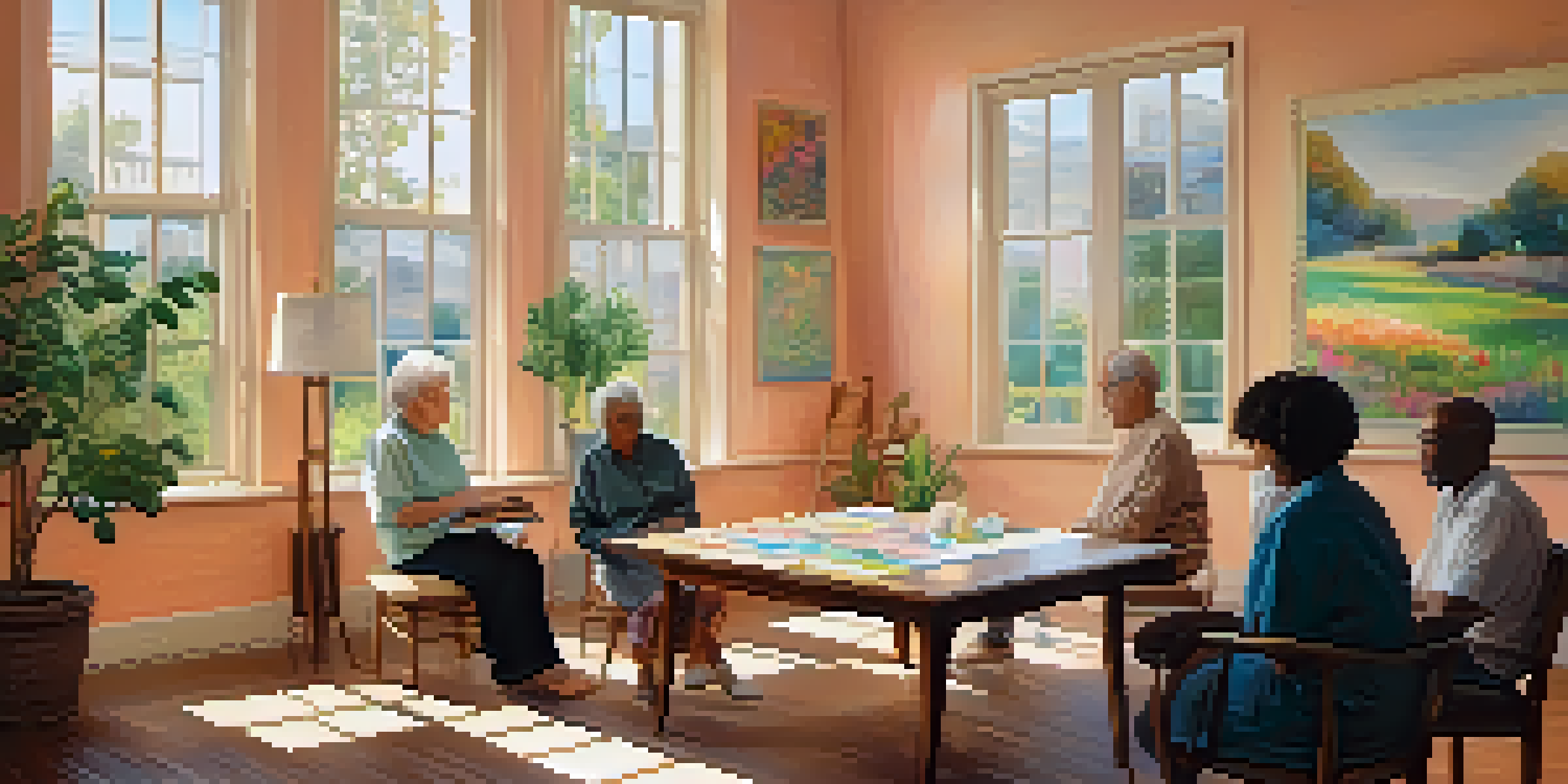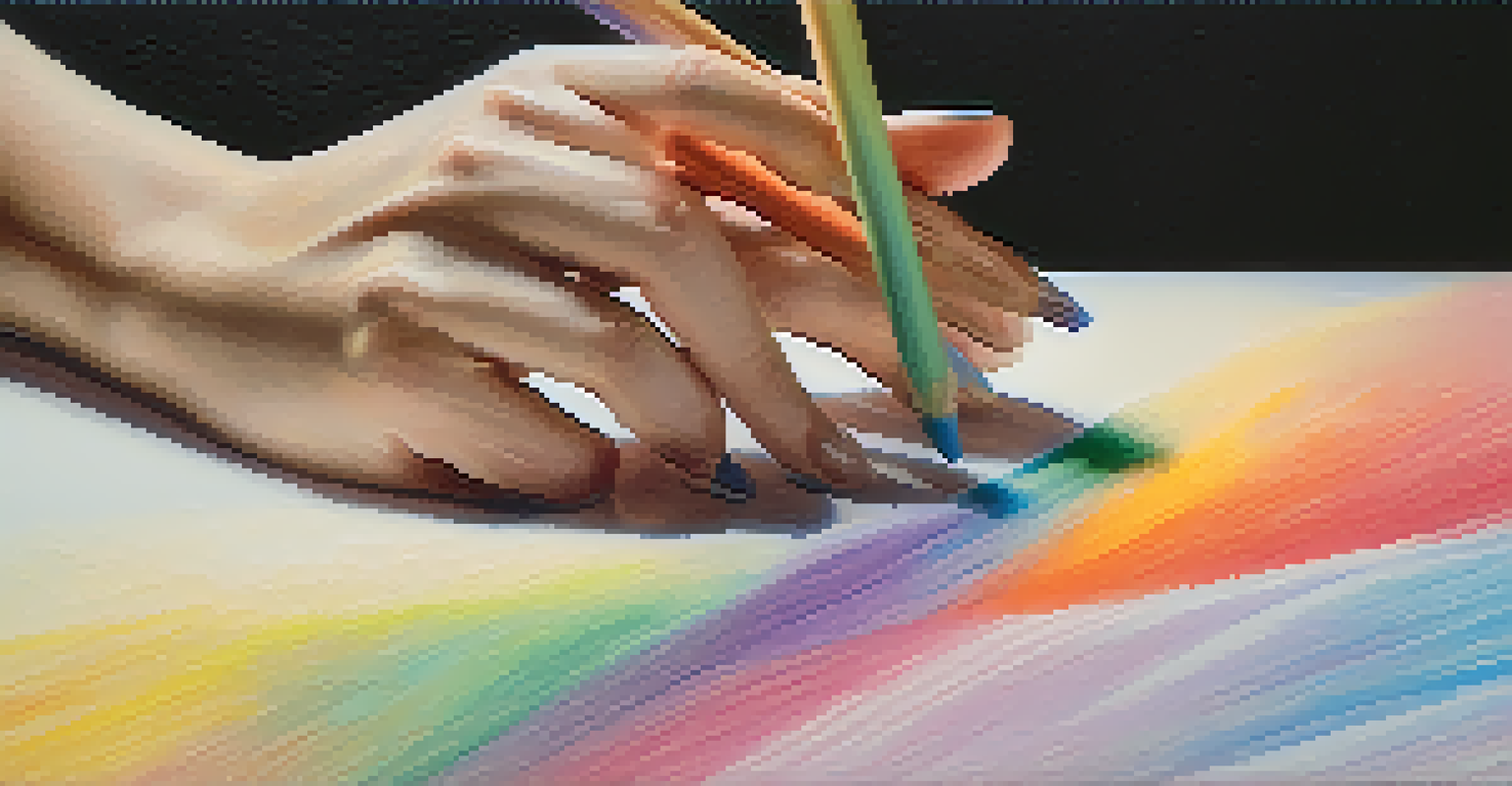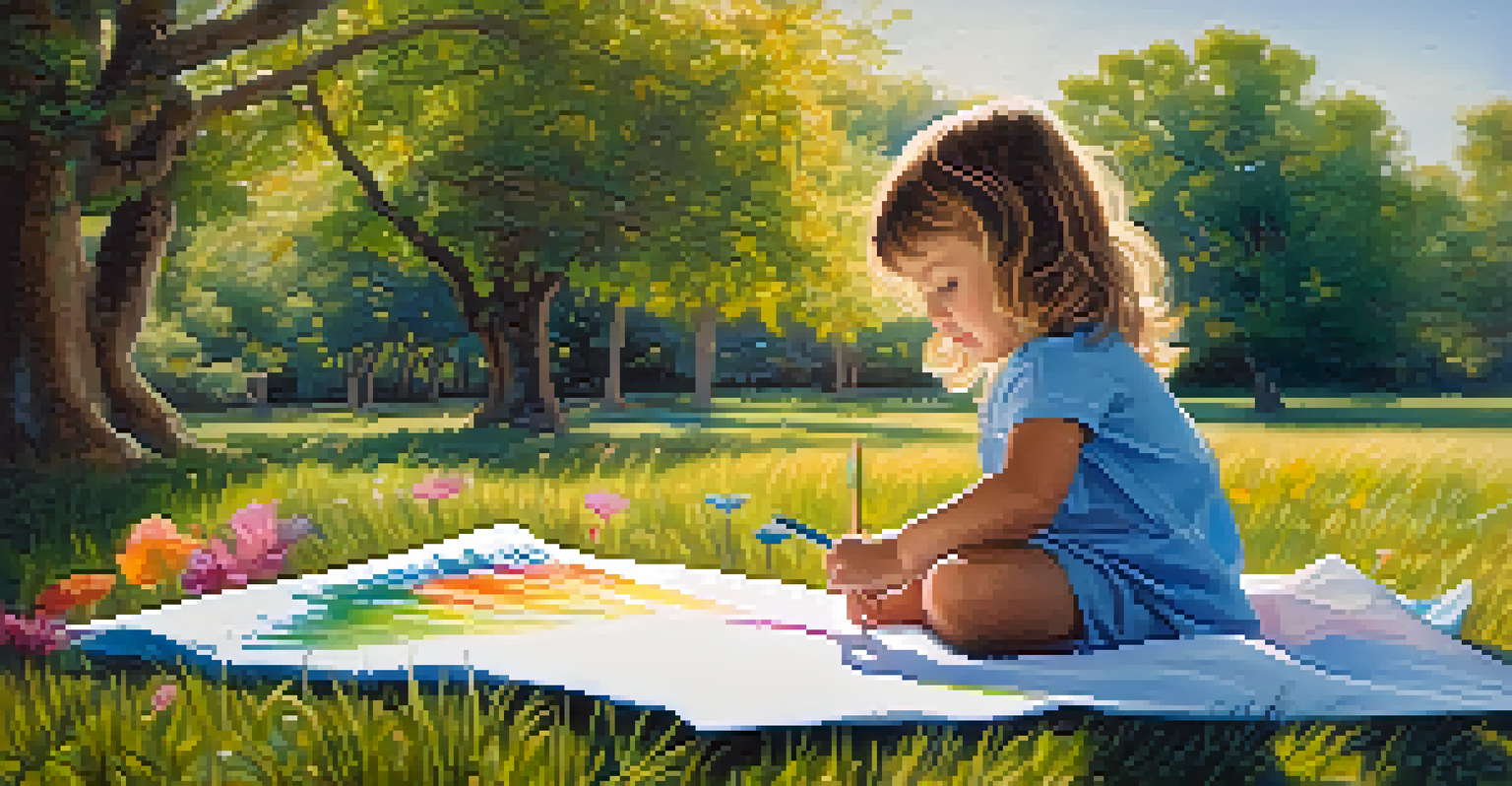Using Pastels in Art Therapy: Techniques for Soft Expression

Understanding Pastels and Their Unique Qualities
Pastels are a versatile medium that offers a soft, vibrant color palette. They come in various forms, including soft, hard, and oil pastels, each providing different textures and effects. This unique quality allows artists to blend colors easily, creating a dreamy, ethereal look that can evoke deep emotions.
Art is not what you see, but what you make others see.
In art therapy, the gentle nature of pastels encourages participants to explore their feelings without the pressure of precision. The tactile experience of working with pastels can also be calming, helping individuals relax and connect with their inner thoughts. This makes pastels an ideal choice for therapeutic environments.
By choosing pastels, therapists can guide clients in expressing complex emotions in a non-threatening way. The act of smudging and blending pastels can symbolize the merging of different feelings, making it easier to understand and articulate emotions. This medium's approachable nature invites creativity and exploration.
The Benefits of Using Pastels in Art Therapy
Using pastels in art therapy offers numerous benefits, especially for emotional expression. Their soft hues can evoke feelings of warmth and comfort, making it easier for clients to engage in the therapeutic process. The visual appeal of pastels can also stimulate creativity, encouraging individuals to explore their artistic side.

Pastels are particularly effective for those who may struggle with verbal communication. For clients with anxiety, depression, or trauma, expressing themselves through color and texture can provide a sense of relief. This non-verbal form of communication allows individuals to convey feelings that words may fail to express.
Pastels Foster Emotional Expression
The gentle nature of pastels encourages individuals to express complex emotions in a non-threatening way.
Additionally, the physical act of applying pastels can be therapeutic in itself. The motion of drawing, blending, and layering can help release pent-up emotions and reduce stress. This hands-on approach fosters a deeper connection between the artist and their emotions, facilitating healing.
Techniques for Engaging with Pastels in Therapy
Art therapists often employ various techniques to help clients engage with pastels. One popular method is the 'free drawing' approach, where individuals are encouraged to create without any specific goals or expectations. This technique promotes spontaneity, allowing emotions to flow freely onto the paper.
Every artist dips his brush in his own soul, and paints his own nature into his pictures.
Another effective technique is 'layering,' where clients build up multiple layers of color to create depth and richness. This method can mirror their emotional complexity, helping them to visualize and process their feelings. The layering process also allows for mistakes to be incorporated, emphasizing the beauty of imperfection.
Smudging is yet another technique that can facilitate emotional release. By using fingers or tools to blend colors, clients can create a softer appearance that often resonates with feelings of vulnerability. This technique can be particularly cathartic, as it encourages individuals to confront and process their emotions.
Creating a Safe Space for Expression
A crucial aspect of art therapy is establishing a safe and supportive environment. When using pastels, it's essential for therapists to foster a space where clients feel comfortable expressing themselves without judgment. This sense of safety allows individuals to explore their emotions more openly.
Therapists can enhance this sense of safety by providing gentle guidance and reassurance throughout the creative process. Reminding clients that there are no right or wrong ways to use pastels can alleviate performance pressure. Encouragement to experiment fosters a sense of freedom and exploration.
Therapeutic Benefits of Pastels
Using pastels in art therapy provides a calming and creative outlet for those struggling with verbal communication.
In this safe space, clients can feel empowered to express deeper emotions that may have been difficult to articulate verbally. The act of creating with pastels becomes a tool for self-discovery, enabling individuals to confront and understand their feelings on a deeper level.
Incorporating Mindfulness in Pastel Techniques
Mindfulness is an essential component of art therapy, and working with pastels provides an excellent opportunity to practice it. Therapists can encourage clients to focus on the sensations of drawing and blending, promoting a sense of presence and awareness. This practice can help reduce anxiety and cultivate a calming effect.
By paying attention to the colors, textures, and movements involved in using pastels, clients can develop a deeper connection to their emotions. This mindful engagement allows them to process feelings as they arise, leading to a more profound understanding of their emotional landscape. It's a beautiful way to merge art and mindfulness.
Incorporating mindfulness into pastel techniques can serve as a grounding exercise, especially during moments of emotional turbulence. Clients can take a pause, breathe, and focus on the act of creating, which can be incredibly soothing. This combination of art and mindfulness creates a balanced approach to emotional expression.
Case Studies: Success Stories with Pastels in Therapy
Many individuals have experienced transformative journeys through the use of pastels in art therapy. For instance, one case study involved a young adult struggling with anxiety who found solace in free drawing with pastels. As they explored colors and forms, their anxiety began to diminish, allowing for clearer self-expression.
Another notable success story featured a child dealing with trauma. Through layering techniques with pastels, they were able to visualize their feelings of fear and sadness, ultimately leading to cathartic release. This process not only aided in emotional healing but also fostered a sense of agency over their experiences.
Creating Safe Spaces in Therapy
Establishing a supportive environment allows clients to explore their emotions freely while using pastels.
These case studies demonstrate the profound impact of using pastels in therapy. They highlight how this medium can serve as a bridge to deeper emotional understanding and healing, showcasing the power of artistic expression in therapeutic settings.
Conclusion: Embracing Soft Expression Through Pastels
In conclusion, pastels offer a unique avenue for emotional expression in art therapy. Their soft, inviting nature encourages exploration and creativity, making them an ideal medium for those seeking to process complex feelings. The techniques associated with pastels can facilitate deeper connections with emotions, allowing for healing and growth.
Art therapists play a vital role in guiding clients through their artistic journeys, ensuring a safe and supportive environment. By incorporating mindfulness and various techniques, therapists can help individuals unlock their emotional potential through the gentle touch of pastels.

Ultimately, embracing soft expression through pastels can lead to transformative experiences. As clients navigate their feelings and create beautiful artwork, they embark on a path of self-discovery and healing, illustrating the profound impact of art therapy.